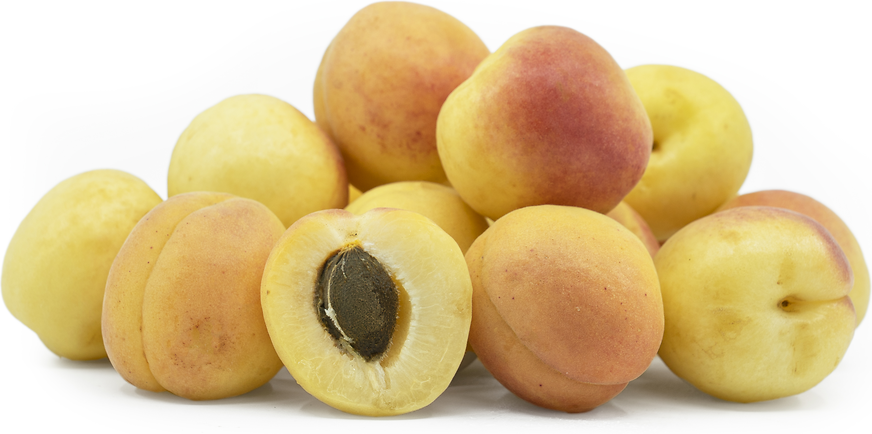


Afghanistan Apricots
Estimated Inventory, cs : 0
Description/Taste
Afghanistan apricots are medium sized, with a smooth, pale-yellow skin and the occasional blush at the shoulders. They have the characteristic midline indention running down one side from the stem end to the tip. Afghanistan apricots are a freestone variety, meaning the flesh does not adhere to inner almond-shaped stone. The pale-yellow flesh is soft and has a melting quality. It offers a very sweet flavor with very little acidity.
Seasons/Availability
Afghanistan apricots are available in the late spring through the summer months.
Current Facts
Afghanistan apricots are a white-fleshed variety, botanically classified as Prunus armeniaca. Despite the name, this variety is originally from Iran, and not Afghanistan. The species name is a reference to Armenia, a country in the Caucasus region, where this type of apricots is believed to have originated. Afghanistan apricots are rare and are not commercially produced.
Nutritional Value
Afghanistan apricots are a rich source of vitamins A and C, and dietary fiber. They are a good source of B-complex vitamins, calcium, phosphorus, iron and the electrolyte potassium.
Applications
Afghanistan apricots can be used in raw, cooked or dried applications. They can be used in both sweet or savory dishes. Add raw sliced and pitted fruits to Use them in baked goods like tarts, crumbles or pies. Afghanistan apricots can be roasted or grilled, poached or cooked down in to a sauce. Pair Afghanistan apricots with strong cheeses, lamb, chicken, other stone fruits, and herbs like rosemary and basil. Dried apricots can be used in soups, rice, and chicken dishes. Afghanistan apricots will store in the refrigerator for up to one week.
Ethnic/Cultural Info
Apricots have been cultivated in Iran for centuries. The Persians referred to the apricot of Iran as the “seed of the sun”. They are less often eaten fresh, and more often dried to preserve their flavor and nutritive value. Many different Persian recipes call for dried apricots, such as stews, chicken and rice dishes. Apricots in Iran are also processed for the sweet inner kernels of their seeds, which are eaten as a nutritious snack.
Geography/History
Afghanistan apricots were first brought to North America in 1957 by Dr. Karlos Lapins, a plant breeder with the Canadian Research Station in Summerland, British Colombia. Lapins brought seedlings from Tehran, Iran, which were likely one of the few white-fleshed varieties, like Shaa-kar-pareh or Shalakh. The variety was originally deemed too tender for commercial production. The tree is considered a low-chill variety that can withstand longer periods of time below 45 degrees Fahrenheit. Because of its cold tolerance, it will grow at higher altitudes in more temperate regions. Today, in the United States and Canada, Afghanistan apricots are most often grown by smaller, niche orchards. They may be spotted at farmer’s markets in central and Southern California, or in backyard orchards in the Western and Pacific Northwestern United States and the East Coast.
Recipe Ideas
Recipes that include Afghanistan Apricots. One
| afgancultureunvieled.com |
|
Afghan Lemony Apricot Stew |
Podcasts




